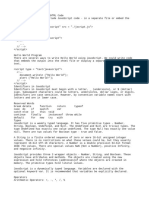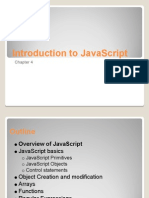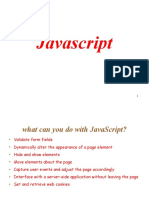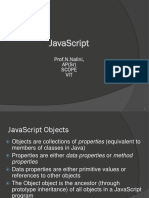0% found this document useful (0 votes)
65 views21 pagesLecture 2 Intro To JS
1. The document is an introduction to a course on Vanilla JavaScript that covers topics like the history and evolution of JavaScript, why Vanilla JS is popular, variables, data types, arrays, functions, strings, loops, objects, and object-oriented programming in JavaScript.
2. The lecture defines Vanilla JS as using plain JavaScript without additional libraries and clarifies that it refers to the same language as regular JavaScript.
3. Some reasons why JavaScript is so popular discussed are that it allows developing desktop, mobile, and web applications with just JavaScript knowledge.
Uploaded by
Jisun AurnobCopyright
© © All Rights Reserved
We take content rights seriously. If you suspect this is your content, claim it here.
Available Formats
Download as PPTX, PDF, TXT or read online on Scribd
0% found this document useful (0 votes)
65 views21 pagesLecture 2 Intro To JS
1. The document is an introduction to a course on Vanilla JavaScript that covers topics like the history and evolution of JavaScript, why Vanilla JS is popular, variables, data types, arrays, functions, strings, loops, objects, and object-oriented programming in JavaScript.
2. The lecture defines Vanilla JS as using plain JavaScript without additional libraries and clarifies that it refers to the same language as regular JavaScript.
3. Some reasons why JavaScript is so popular discussed are that it allows developing desktop, mobile, and web applications with just JavaScript knowledge.
Uploaded by
Jisun AurnobCopyright
© © All Rights Reserved
We take content rights seriously. If you suspect this is your content, claim it here.
Available Formats
Download as PPTX, PDF, TXT or read online on Scribd
/ 21























































